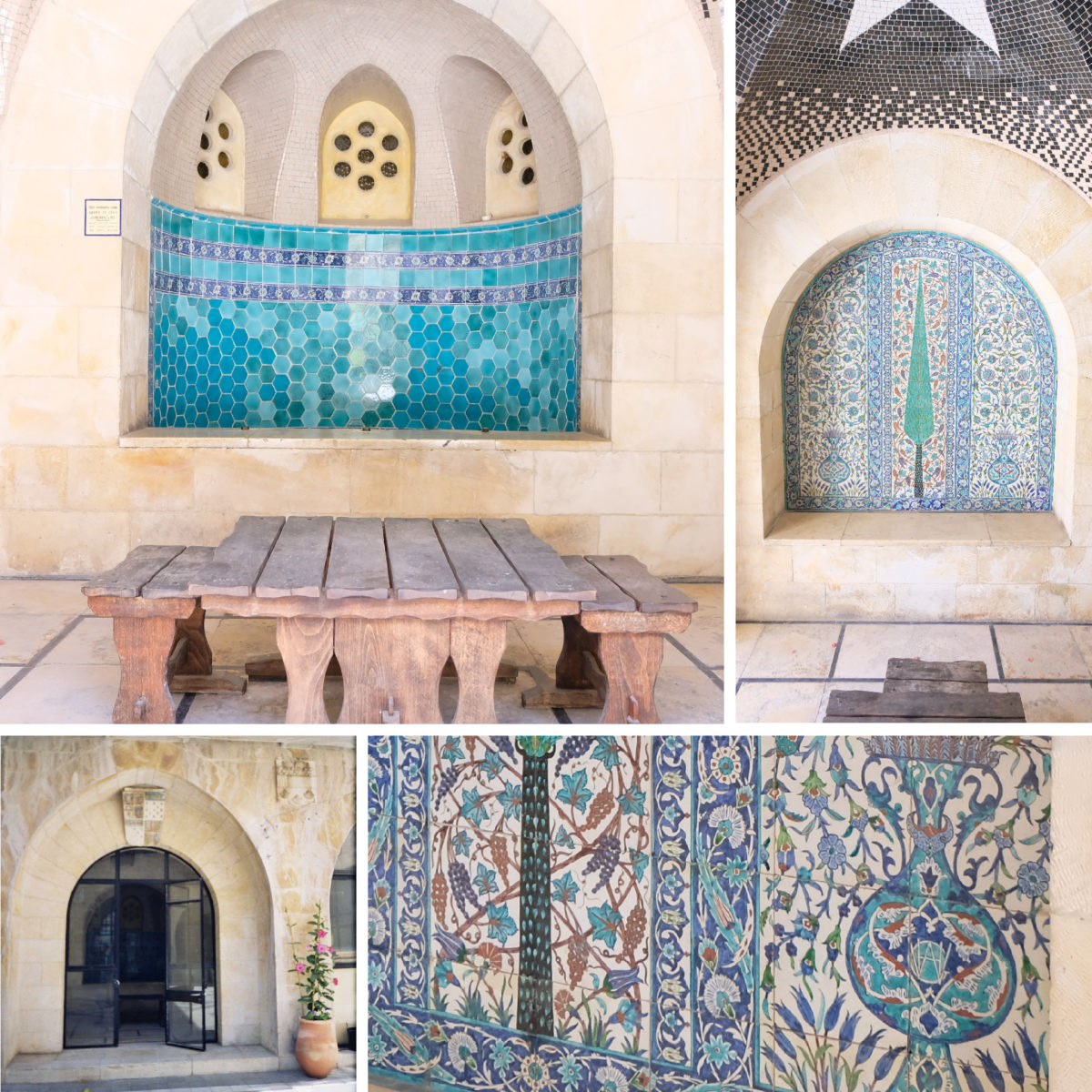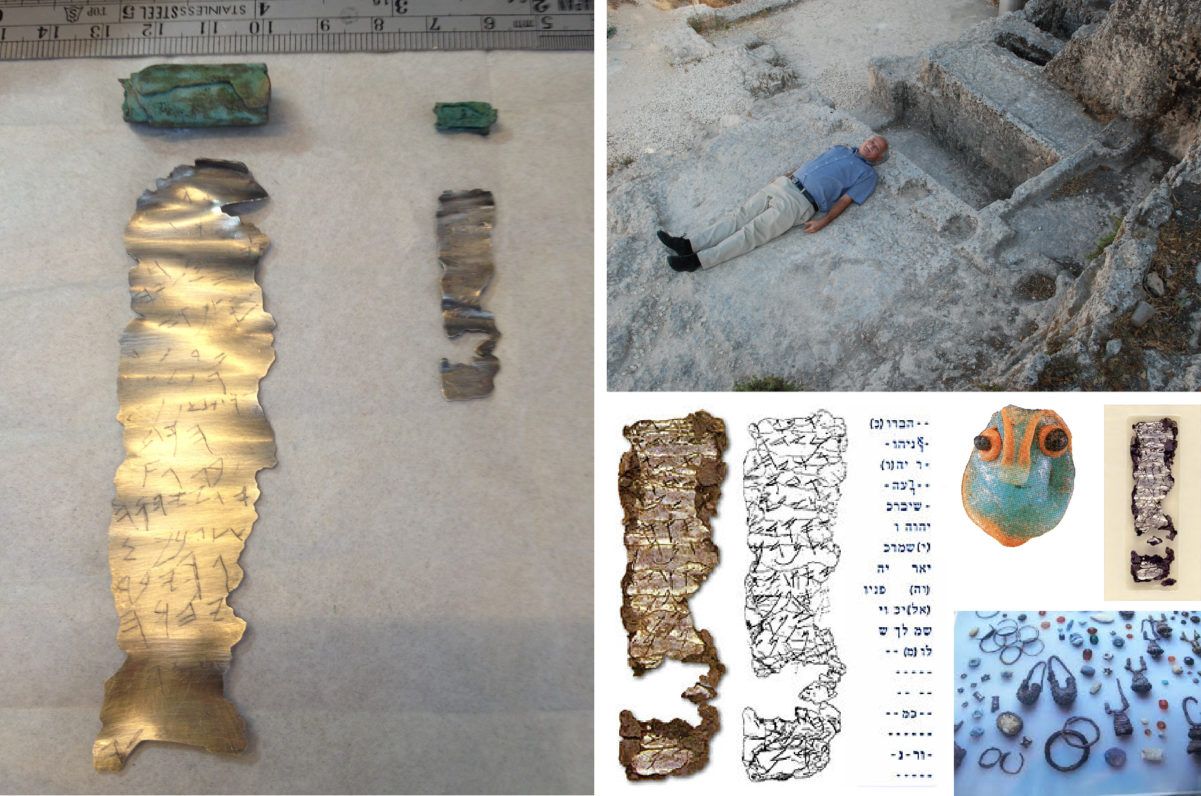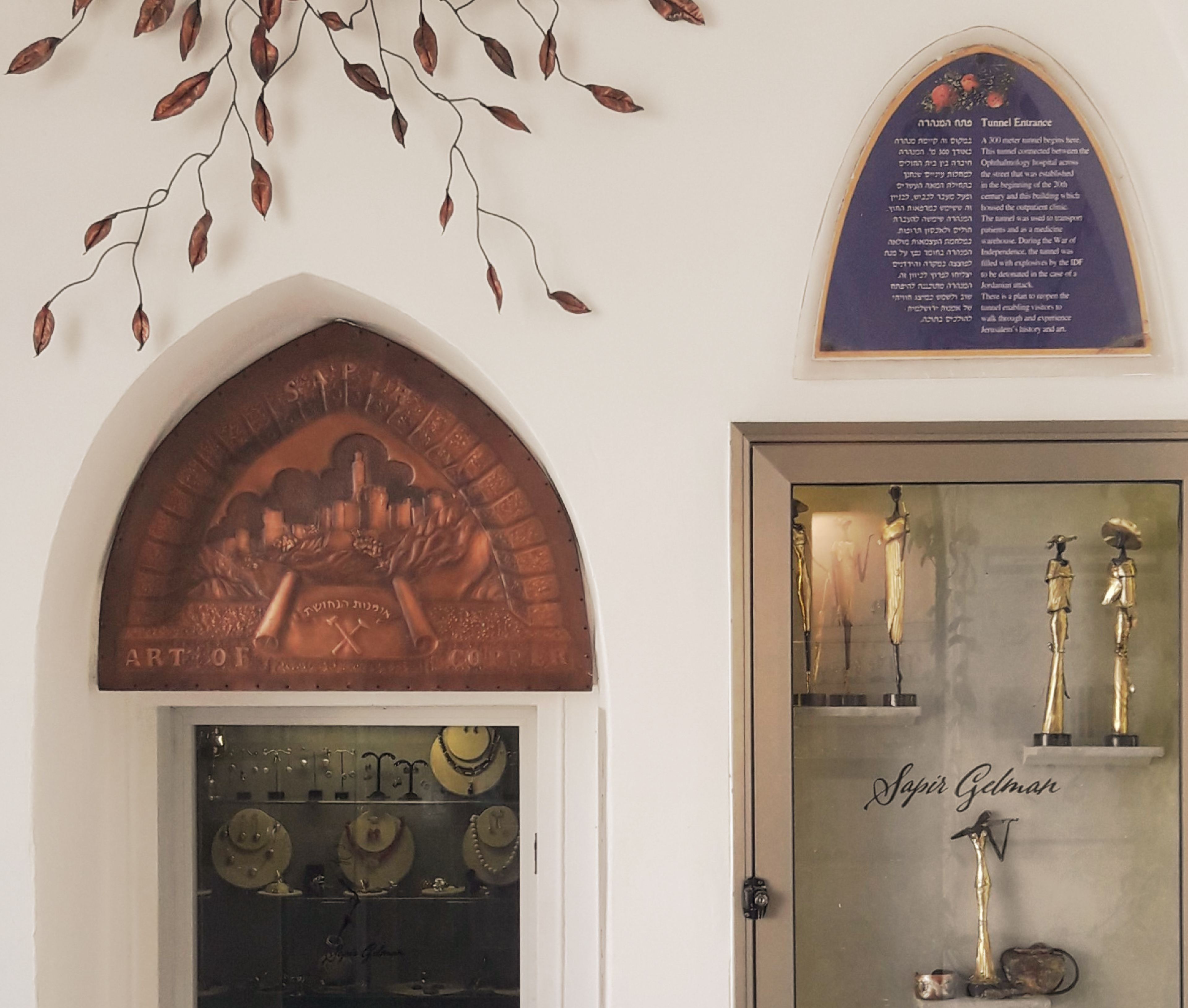The building's pearls and permanent exhibitions
Armenian Ceramics Room
In 1925, David Ohannessian covered the walls of the room with Armenian tiles. The tiles were painted by hand without any figures, as a gesture of goodwill toward Islam. They include motifs from ancient mosaics and other symbolic topics, and the general look is of Arabic calligraphy, which expresses the infinite nature of God.
A detailed explanation is provided in the guided tour “Jerusalem You Never knew”

The Priestly Blessing Exhibition
In the archeological dig at Ketef Hinnom, situated between the Scottish Church and the Jerusalem House of Quality, an ancient silver scroll was found in a burial chamber, with an inscription in ancient Hebrew reading, “The Lord bless you and keep you” … a priestly blessing from 2,700 years ago!
The exhibition displays a copy of the scroll and copies of other findings from the site and the story of the ancient Hebrew writing.
A detailed explanation is provided in the guided tour “Jerusalem You Never knew”

The St. John Hospital
An eye clinic belonging to the Order of St. John operated in the place. Until 1947, the building served as an outpatient clinic of the hospital and treated about 20,000 patients until it closed. The Order of St. John was part of the Crusader Order of Hospitallers, which treated members of all religions and had no missionary goals, making it the only Christian hospital that Jews agreed to stay in.
The building was designed by Clifford Holiday in 1925 in a romantic-eclectic style that combines architectural elements from East and West.
A detailed explanation is provided in the guided tour “Jerusalem You Never knew”

Heraldic emblems
The heraldic emblems in the inner courtyard tell the story of the noble families that were knights of the St. John Order and that donated toward the construction of the hospital. The spider is the symbol of Bruce King of Scotland, who fought the British relentlessly, like a spider that weaves its web anew every day. The fleur-de-lis (white lily) is the symbol of the French crown.
A detailed explanation is provided in the guided tour “Jerusalem You Never knew”

The Tunnel Opening
In the entrance to the Jerusalem House of Quality there is a tunnel that was used to transfer patients from the building, which served as a clinic, to the hospital, which was in the opposite building. The tunnel also served to store medical supplies and in the War of Independence it was filled with explosives in case the Jordanian Army reached the site.
A detailed explanation is provided in the guided tour “Jerusalem You Never knew”


 BY JOSEF STUDIO
BY JOSEF STUDIO